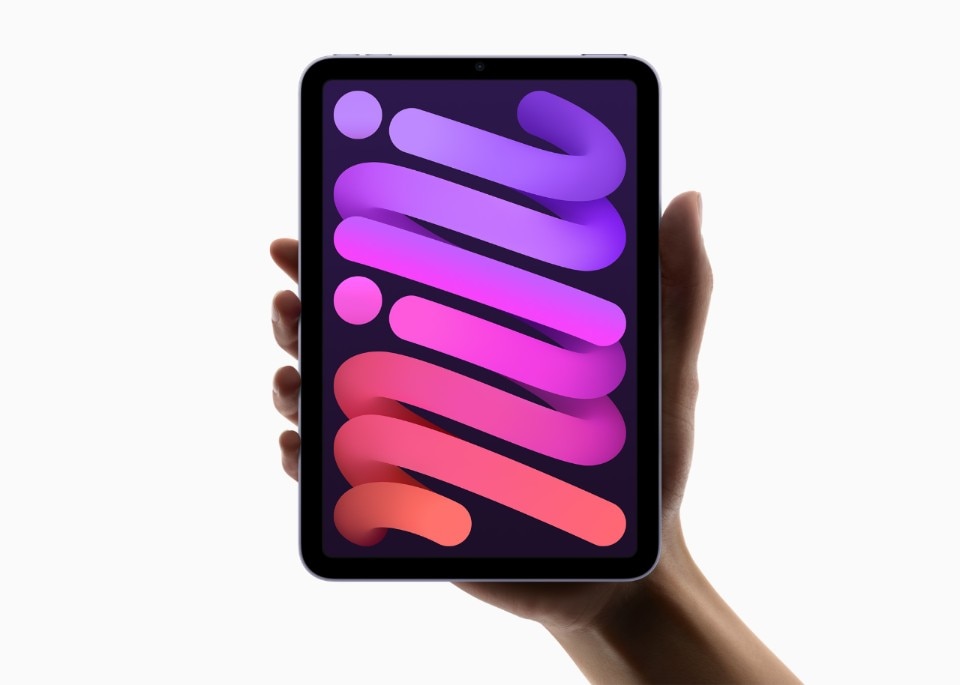“I was born as an analogue artist and the iPad, as strange as it sounds, takes me back to my origins, when I drew more often with pens and brushes. The iPad mini, in particular, made me rediscover that kind of freshness and more direct approach to drawing”. Simone Massoni is a visual artist who began his career as an illustrator of children’s books. Today, his visual explorations range from drawing to animation, and can be found in books and magazines, but also in advertising campaigns of major international brands. Almost all of them are now created on an Apple tablet. This choice is linked to the opportunities enabled by the tool. According to Massoni, it does not simply act as a bridge between analogue and digital, but it is a world apart, to be discovered by following new rules, without trying to impose the analogue creative experience. As part of our research into the evolution of creative work, we asked him to tell us about his experience. In order to understand how a device often associated with the concept of content use can already be a full-fledged tool for artistic creation.
Massoni, what made you start using the iPad?
For me what made the difference was the Apple Pencil. I think I am one of the few visual artists or illustrators who has never had a “Wacom Cintiq with display” period. At most, I have always used the classic Wacom graphics tablet, the one without the integrated display. However, when I tried the Pencil, the difference was abysmal, I found sensations that the graphics tablet never gave me, closer to my analogue past.
I have never tried to combine the two worlds. I am not interested in creating a bridge between analogue and digital, I am happy for the two experiences to remain separate. I believe that each tool has its own characteristics, to be explored individually. However, even on the iPad I start from a manual and instinctive stroke, as I would have on paper.
Simone Massoni, Evolving Ten Peoodle
So, the iPad as an electronic version of pencils and brushes?
In terms of gestures, working on the iPad certainly has deep similarities with the classic tools of the visual artist. I have not abandoned my notebook, my pencils, my brushes, though. There are also deep differences, for better or for worse: the iPad does not have the friction that a pen has on paper, and the creation is faster.
I have always tried not to repeat or recreate the traditional experience with the iPad, but to discover how to do things differently. The ability to erase, go back, fix the mistake, makes me approach drawing in a different way. In that sense, the iPad immediately gave me a sense of freedom and more possibilities to explore. Especially because commercial work has a deadline: if I take less time to do a drawing, I have more time to try new things, or even just more free time for my own work. And then there is another aspect: the iPad mini has made me rediscover the pleasure of the sketchbook. Travelling a lot, it has changed my life because I can take dozens of tools with me. I could not take the light table with me to work on sketches, for example, but on the iPad, I can just use the transparency of a layer and copy it onto another layer.
Is it a matter of the size of the device, or are there other aspects?
Size and weight are the most important aspects, of course. If I need to do big works, or edit a video or a photo, the space I have on the larger iPad Pro is very useful. But I never take that out, it sits on my desk. The mini is exactly the extension of my notebooks. It is an omnipresent item in my bag. It has not replaced sketchbooks, which give me back a material drawing, allow me to make collages, play more with colours and are physically consumed as part of the creative process. Trivially, the fact that I can hold it in my hand in a certain way, because of the way it is made, gives me 90% of the feeling I get from using a sketchbook.

Was it an artistic need you knew you wanted to fulfil, that of a digital notebook?
Not really, it was a happy discovery. Particularly because of a rarely considered aspect. When I am drawing in public, I need to not be noticed, I need to isolate myself and kind of disappear, and with the iPad mini, I can do that because I do not draw attention. Unless the Apple fan notices it and asks you about it, nobody pays attention to you, and that is exactly what I want. It is the same feeling I had with the Ricoh GR III and photography. I had stopped taking photos for a while, but when I picked it up, I realised almost by accident that it was the perfect tool to take the street photos I like, without being noticed. It was the same with the iPad mini. I did not know I had this creative need until I picked it up and tried it out.
Is the iPad the tool you use for commercial work as well?
Yes, it is. Everything I do now originates on the iPad, but for the final details, I move to the Mac. It is not because of the limitations of the iPad, but just a matter of habit. For me, the work ends up in Photoshop on the Mac, but only because I have years and years of predefined actions recorded. In fact, as I explored the possibilities of the iPad a bit, I realised that I could do 100% of what I do on my computer on the tablet. The truth is, personally, I am still faster on the Mac. And back to the issue of speed: especially for commercial work, I have to choose the solution that is faster for me. In my industry, we have reached parity between the PC and the iPad in terms of functions and possibilities. Indeed, the iPad has many advantages in some respects, such as the Pencil or the ability to nimbly turn and manipulate it. I think that a digital native is more advantaged than I am from this point of view, because he does not have the psychological barriers of years and years spent working on the computer.
Stefano Massoni, Evolving Doodle 16
Has the way the iPad tool works (the Mini as well as the Pro) changed your creative process? If so, in what way?
Not entirely, but it has certainly added a lot of new things to it. In particular, for the animation of my drawings. I know the basics of animation but I am not an animator. But on the iPad, apps as Procreate have an integrated timelapse that does not make you feel like you are being watched. I have started using it to create drawings that retain the freshness of a doodle, but incorporate the element of animation. Let’s say that thanks to the iPad I am exploring the possibility of using the recording and direction of animation in a creative way. In classical drawing, you cover it and draw over it, a lot. On the iPad I do something similar but digitally, with faster tools. It is in a small way what Blu does with the timelapses of his work, for example, editing them all the time and documenting the process.
What is the workflow on Simone Massoni’s iPad?
I start in the most traditional way: with the sketch. When I have sufficiently defined the “pencil” drawing, I go back and define it further. With the iPad, I can do the initial sketch all in one, then the light table to copy it. And then I do not have to do any scanning. To put it bluntly, I can say that the iPad has improved my professional life a lot.
Which apps would you recommend for those who want to approach visual art on the iPad?
Maybe I am not the best person to answer this question, because I am a fairly creature of habit. For me, the app of choice is Procreate. I do pretty much everything in there. Sometimes I also use a little bit of Photoshop or Adobe Fresco for iPad, but I have not yet had that moment of enlightenment that I had with Procreate. For me, what the developers of Procreate got right was the idea of building the whole experience around the device, without any legacy or preconceptions. On the other hand, Adobe’s apps for iPad sometimes have the disadvantage of having to somehow bring the desktop experience to a new format. The App Store ecosystem, however, is full of small and large applications. For example, a tool I use all the time is called Amaziograph, which I use to make patterns that I then use on Procreate. The advice, therefore, is to search and find those applications, famous or unknown to most people, that are useful to achieve what we have in mind. From this point of view, the iPad is a wonderful world to explore.


The design of well-being according to Caimi
Two new products ensure the highest level of environmental well-being through acoustic insulation.










